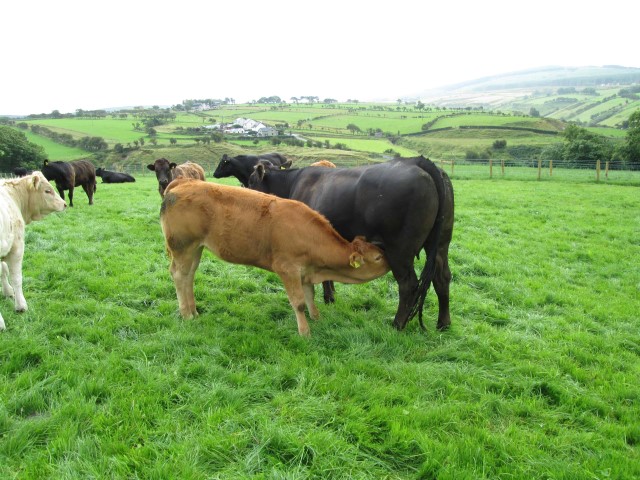One of the key recommendations arising out of the Food Harvest 2020 report was for Teagasc to set up a stand-alone demonstration herd in the west of Ireland.
It was felt that a demonstration farm was needed in the west in order to demonstrate to farmers the key technologies that drive profitability in a suckler herd.
At the recent National Beef Conference, Teagasc’s Adam Woods outlined how the new farm would operate and what its objectives were.
The model of the Newford herd is that a commercial interest operates the farm, owns the animals, employs the labour, with Teagasc providing expert advice, and Teagasc has full access to all data for analysis and dissemination purposes.
A management team consisting of personnel from both Teagasc and Dawn Meats have responsibility for decision making and long-term objectives while Dawn Meats have employed a full-time farm manager who through the direction of the management team for the project has full responsibility for the day to day running of the herd.
Its a one labour unit farm. Matthew Murphy is the farm manager in Newford and he will manage the farm on his own.
This project is also supported by McDonald’s Global Sustainability Team and demonstrates their ongoing commitment to Verified Sustainable Beef Production.
The farming system will be a suckler-to-beef steer and heifer system with steers finished at 20-24 months of age and heifers finished at 20-22 months of age. It is projected that heifers will be finished at 320kg carcass weight and steers will be finished at 350 kg carcass.
The farm will be stocked at 200kg organic nitrogen/ha or 2.7 LU/ha. The system is projected to deliver a gross margin in excess of €1,000/ha.
Cow type is early-maturing (Angus/Hereford) crossbreds from the dairy herd with high Terminal Index bulls being used to produce progeny for slaughter.
Replacements will continue to be sourced from the dairy herd for the duration of the project. The option of replacement heifers being purchased as calves, contract reared and then brought back onto the farm close to calving at 24 months of age is currently being considered.
According to Teagasc, while some may question this replacement strategy and cow type it is important to be cognisant that with the expansion in the dairy herd this type of replacement will be more readily available for suckler farmers and this demonstration farm will be able to exhibit their suitability or non-suitability to a suckler-to-beef system.
This replacement system will also allow the farm generate maximum output/ha, while keeping the system simple with a minimum of stock groups grazing on the farm. In 2016, Teagasc says calving will take place from February 20 to April 30.
As the farm is managed by one labour unit, calving difficulty is an extremely important consideration when selecting terminal sires and a limit of <6% calving difficulty was set.
Other criteria for AI sires were 5 stars on the terminal index, greater than 25kg extra carcass weight and greater than 40% reliability.
To date the farm has grown 9,076kg DM/ha with 7,426kg DM/ha of this coming from grazed grass and 1,650kg DM/ha coming from removal for silage making, according to Teagasc.
There are 48 paddocks on the farm and on average each paddock was grazed 5.3 times since the start of the year, including the silage fields.
Paddocks 18-22 were reseeded in October 2014 and have grown the most amount of grass in 2015, with paddock 18B growing 16t DM/ha to date.
The worst paddock on the farm has grown just 2.2t DM/ha and has already been reseeded this year. Next year’s focus will be on the lower yielding paddocks (towards the right side of Figure 3) to ensure that they grow more grass through increasing soil fertility or reseeding with perennial ryegrass.
The farm system
Grass
